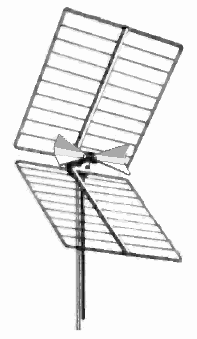Corner reflector antenna
A corner reflector antenna , from English: Corner antenna , is a directional antenna . It consists of a corner reflector, a radiator element, mostly designed as a half-wave or butterfly dipole , and often a correction element or director in front of it. With vertical polarization, a blocking cup dipole (coaxial dipole) can be used as a radiator, which offers a very good match to a 50 ohm coaxial cable .
The antenna design, which belongs to the reflector antennas, was invented in 1940 by John D. Kraus .
Properties:
- Very broadband in the butterfly version (frequency ratios of 1 to 2 are possible)
- high vertical bundling
- high front-to-back ratio
- simple construction.
Corner reflector antennas are mainly used in the UHF range.
Applications are:
- terrestrial TV reception (UHF).
- other radio services
literature
- E. Spindler: antenna technology. VEB Verlag Technik, Berlin (1968)
Web links
Commons : Corner reflector antennas - collection of images, videos and audio files
Individual evidence
- ^ Thomas Schneider: Mobile data communication. (PDF file) Springer-Verlag, January 9, 2013. Section 6.7.3 Antenna corner reflector (p. 117)
- ↑ U.S. Patent 2,270,314
